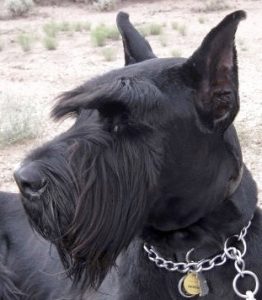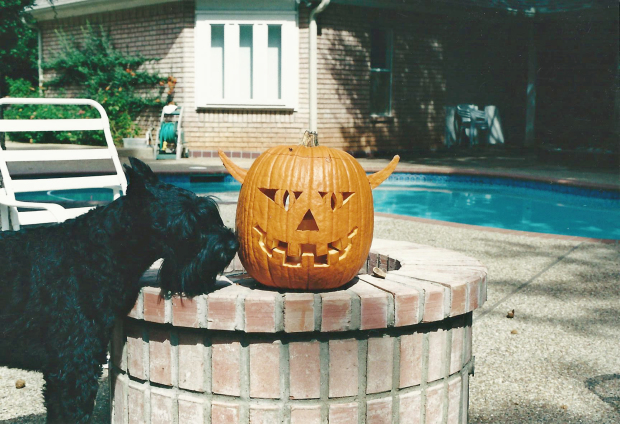
BULLET
At this stage in my blog posts, I’ll explain for subscribers and book readers why I’ve taken you on this long journey from the US to Mexico, back to the US, and then to Africa after a four-year stint in the Caribbean. Not to mention why I’ve introduced you to my shadow of almost fifteen years: my giant schnauzer Shotz, who was the impetus for Bullet in the Darcy McClain thriller series. I’ve provided this background to acquaint readers with me, and to show in detail how these events shaped my main character, Darcy McClain, and the series as a whole.
Darcy is indeed my alter ego, but she is far more adventurous and daring than I, and life is less dangerous when I’m living through her eyes. And like me, she is a globetrotter, which will soon become evident as the series moves overseas (in book five) to exotic European settings like Croatia and Hungary.
But let’s backtrack for a moment to answer a few questions often asked about the series.
1) How did you come to write a series? In an earlier blog post (Corporate Years, Blind Revenge & Genocide), I wrote about my very first novel titled Blind Revenge. I have not released this book but will do so, retitle it, and fold it into the series. It was meant to be a standalone, but the main character in Blind Revenge so closely resembled Darcy that I decided a series was a good idea.
2) What is the timeline of the series? I’ve tied each novel’s time frame to Charlene, Darcy’s younger sister, and her growth. For example, in Brainwash, Charlene was in her second year at Stanford and therefore a college sophomore. In Gadgets, which precedes Brainwash, Charlene is a freshman at Stanford. By the third book, Genocide, Charlene is a junior.
3) How did the name for your main character come about? I toyed with several names but finally settled on Darcy McClain while reading John Grisham’s book The Pelican Brief. I was quite fond of the name Darby, but felt it was a bit too tame for the daredevil main character I had in mind. So, I dropped the b and added a c, making her Darcy. As for her last name, my favorite movie at the time was Die Hard, and I could certainly identify with the Bruce Willis character. Therefore, I took the name McLane but failed to check the spelling. I later decided that McClain served as well as McLane and did not bother to correct the spelling.
4) What is the theme of your novels? The general premise for all of the DM thrillers is the same. A wrong has been committed, usually a murder, and Darcy feels compelled for one reason or another to right that wrong.
5) Why did you create Charlene? I created Charlene, who is twenty years younger than Darcy and a deadbeat, to heighten the conflict in the series. Through this sister-to-sister discord, the reader gets a better understanding of what makes Darcy tick. As the series progresses, Darcy’s innermost thoughts and reactions surface as the longstanding rift between the two sisters finally reaches a crucial point. By seeing how Darcy deals with her sister and the frustrations that arise from their relationship, we come to know her as a person.
6) Why did you create Bullet? Bullet came about by intent, but I hadn’t originally planned he would stay. While writing Gadgets, I intended to portray my antagonist Paco as a pet abuser, a mean person whom the reader would come to hate. But soon two problems arose. One, I found it difficult, if not downright impossible, to write these abuse scenes, especially every time I looked at Shotz, who spent most of her days planted at my feet or staring at me as I typed away on my keyboard. I couldn’t imagine harming her in the slightest way. Two, I began to read Gadgets at the DFW Writers Workshop, and a resounding majority of the members echoed my sentiments. “Surely, you aren’t going to kill the dog?” they asked. No, no intentions whatsoever of killing the dog. By Chapter 10, the unanimous comment was: “You are going to keep the dog in the entire series, aren’t you?” No, I’d had no intentions of doing so. But the more I dwelled on these comments, the more I realized that keeping Bullet in the series made good sense, so I went back to Chapter 1 and made Paco the antithesis of most villains: a man who loved his dog and would do anything for his canine companion. This change steered the plot in an entirely different direction, and for the better, in my opinion.
7) What challenges have you faced while writing your series? Writing any series certainly presents its own set of challenges, but here’s one specific to mine.
I started writing seriously in 1985 (Blind Revenge), intending to fulfill a promise I had made to myself at age eight—that one day I would write a mystery. After dozens of rejections, I set Blind Revenge aside and in 1987 started writing Genocide, in which I first included Darcy McClain. At the time, I did not own a dog and had no intentions of adding a canine sidekick to the series, so Genocide was written without even a mention of a dog.
Midway through Gadgets, I decided my villain needed a canine companion, so I created Bullet and modeled him after my fearless girl, Shotz. By Brainwash, Darcy had inherited Bullet and I had the challenge of working him into Genocide, a story not meant to include a dog. I vacillated for months about adding Bullet to the book, but after persistent urging from my editor Caroline, and in allegiance to my readers, I caved and added him to the plot. Although he plays a bit part in Genocide, he will play a greater role in future DM thrillers.
8) How do you come up with ideas for new books? Stay tuned to next Friday’s blog (11/28/14), when I will answer this question in detail.



